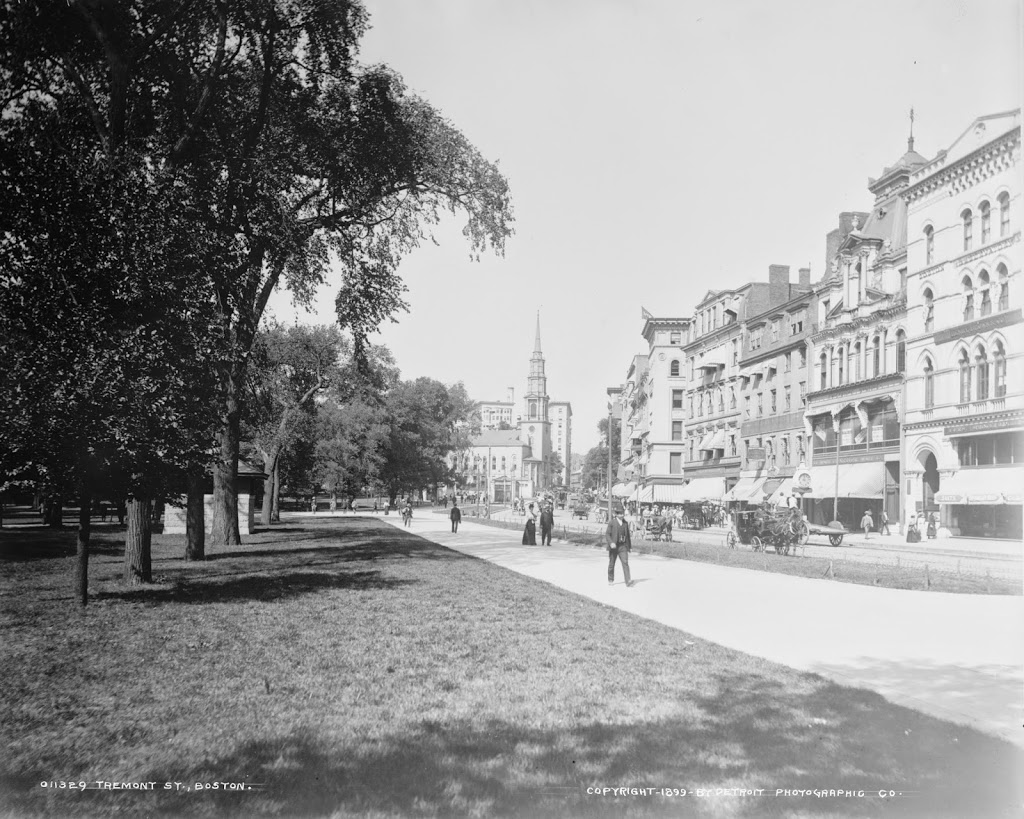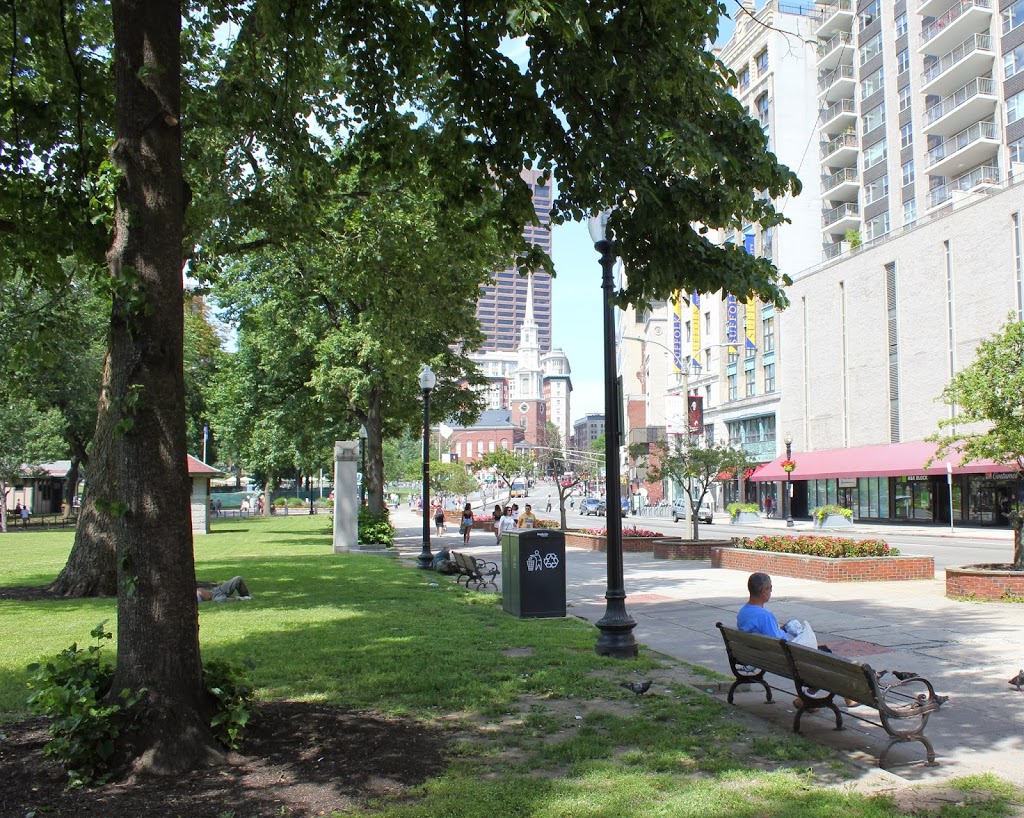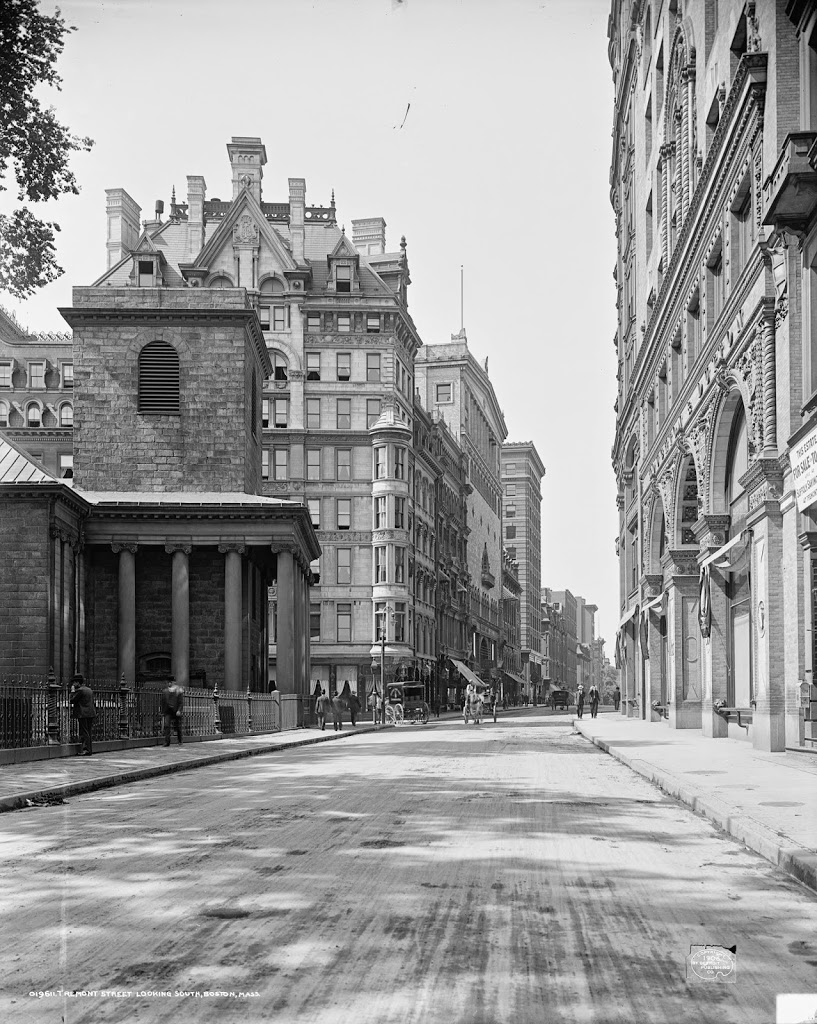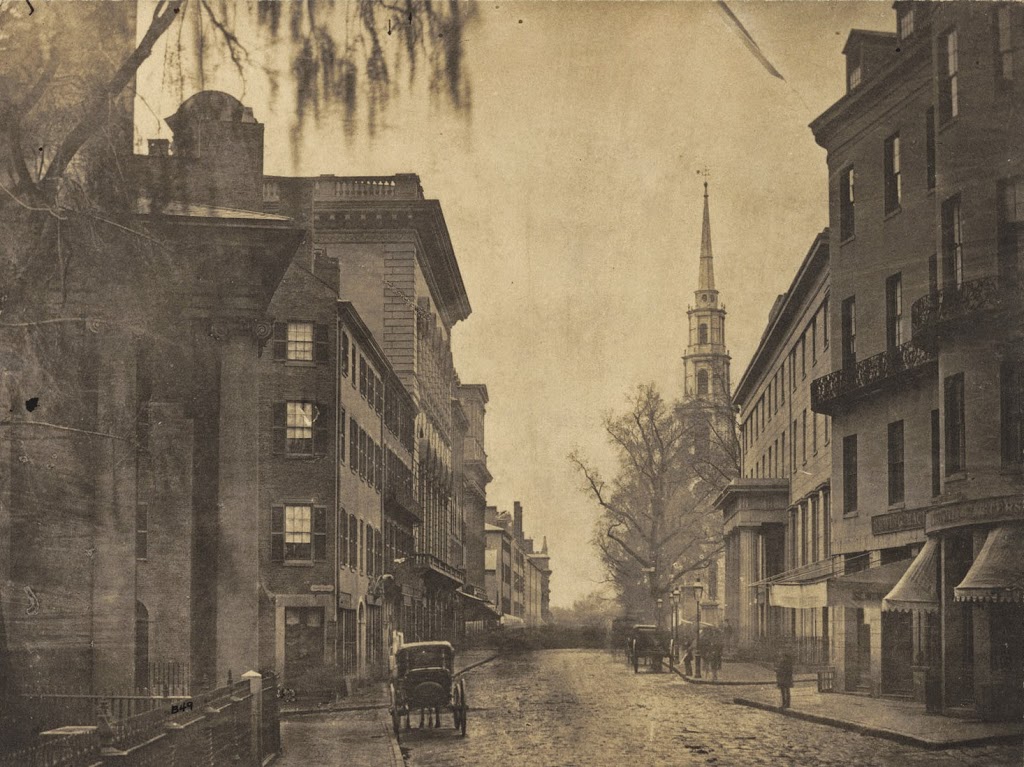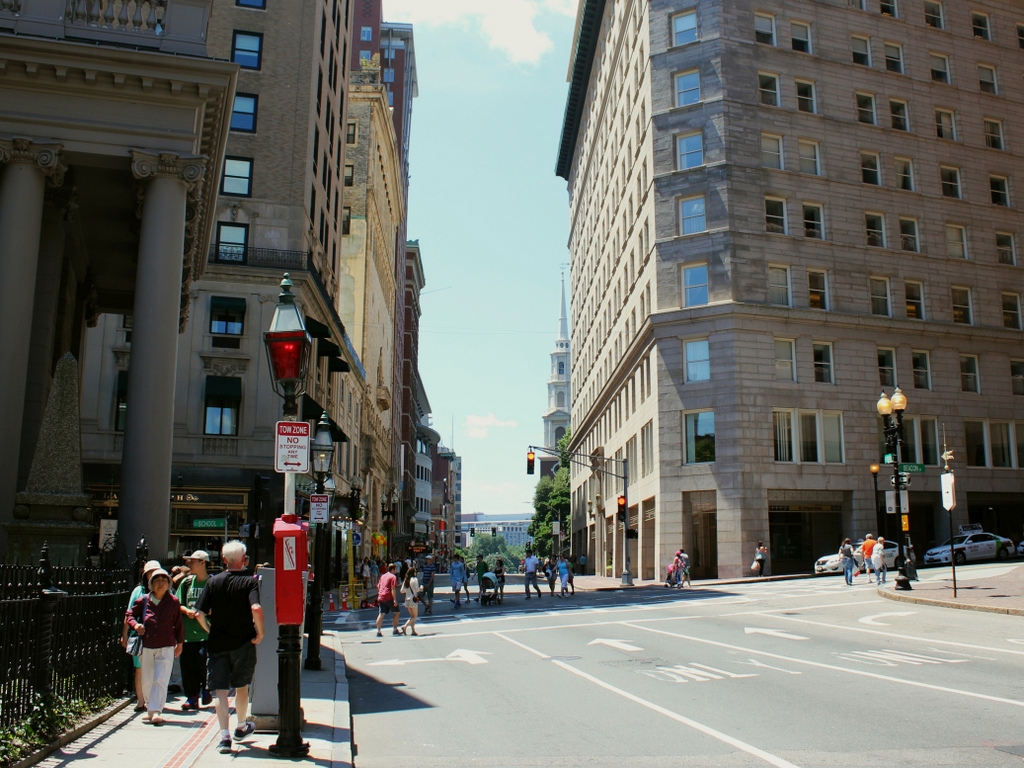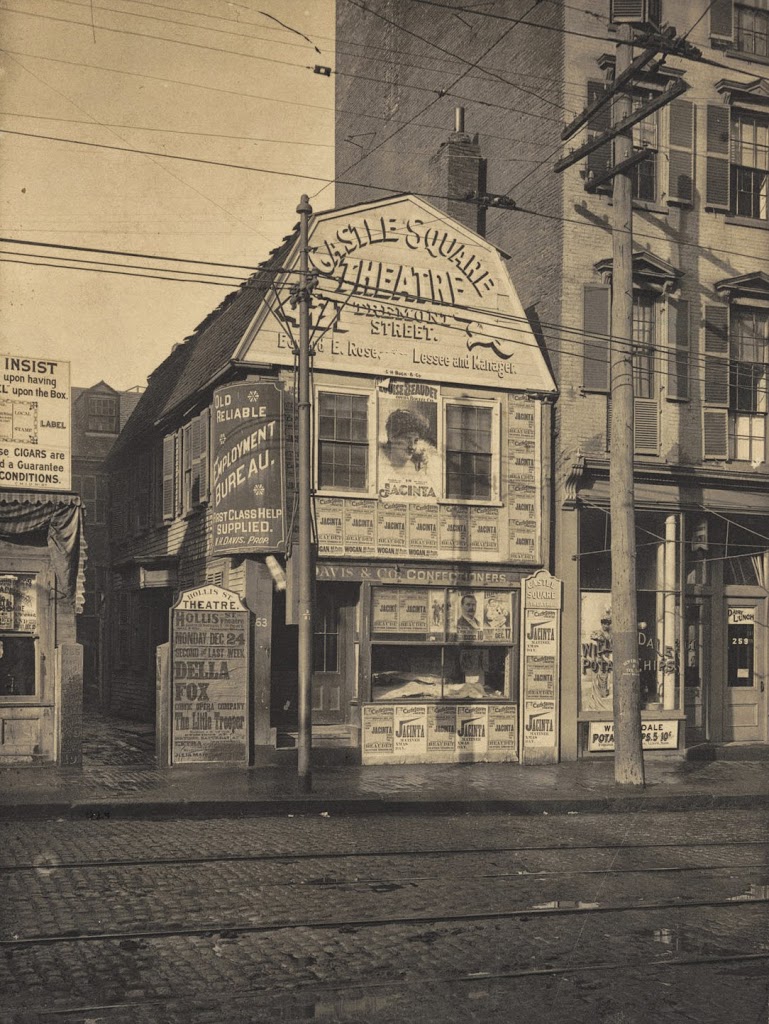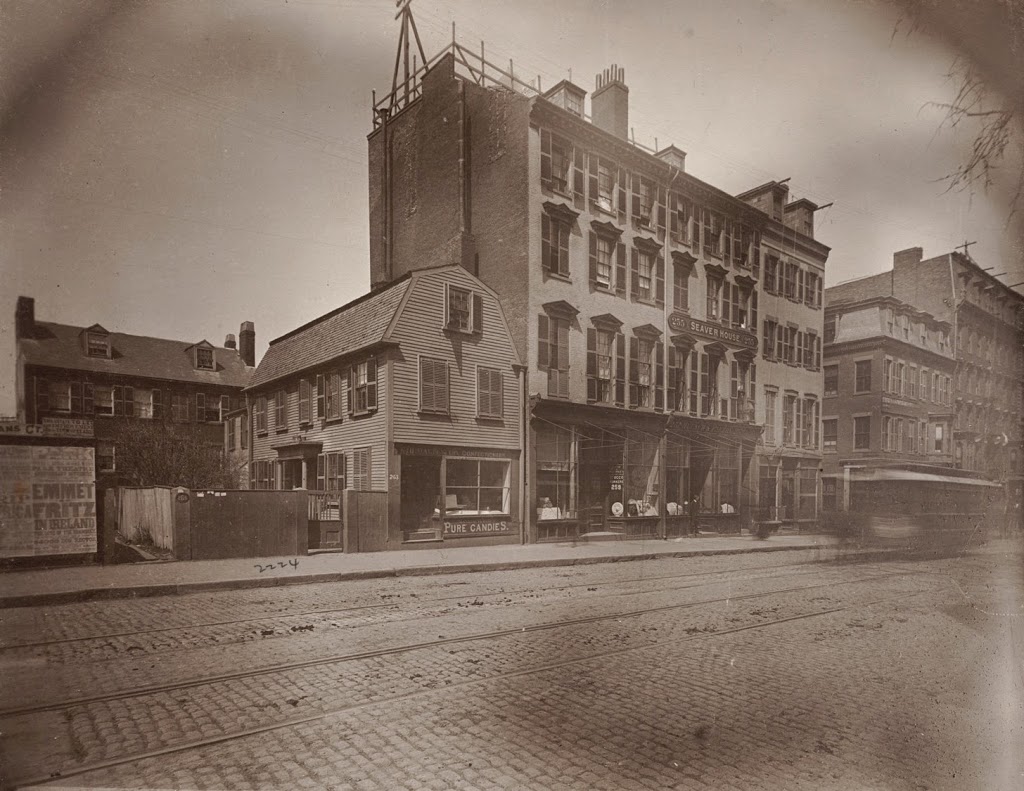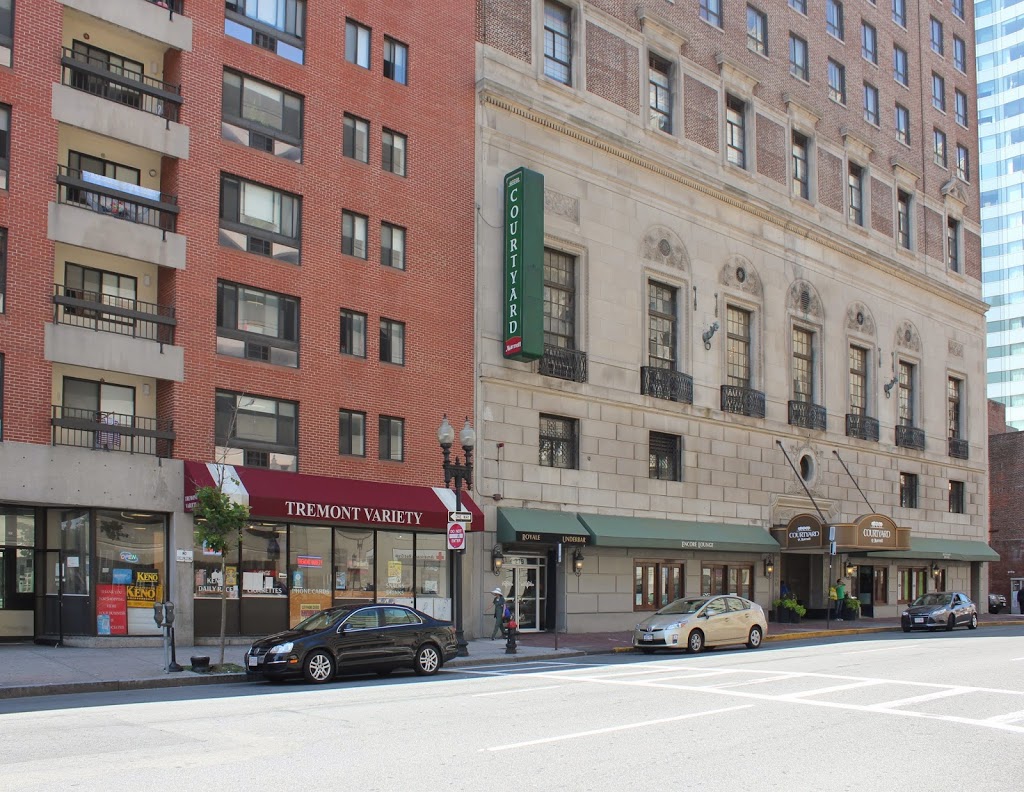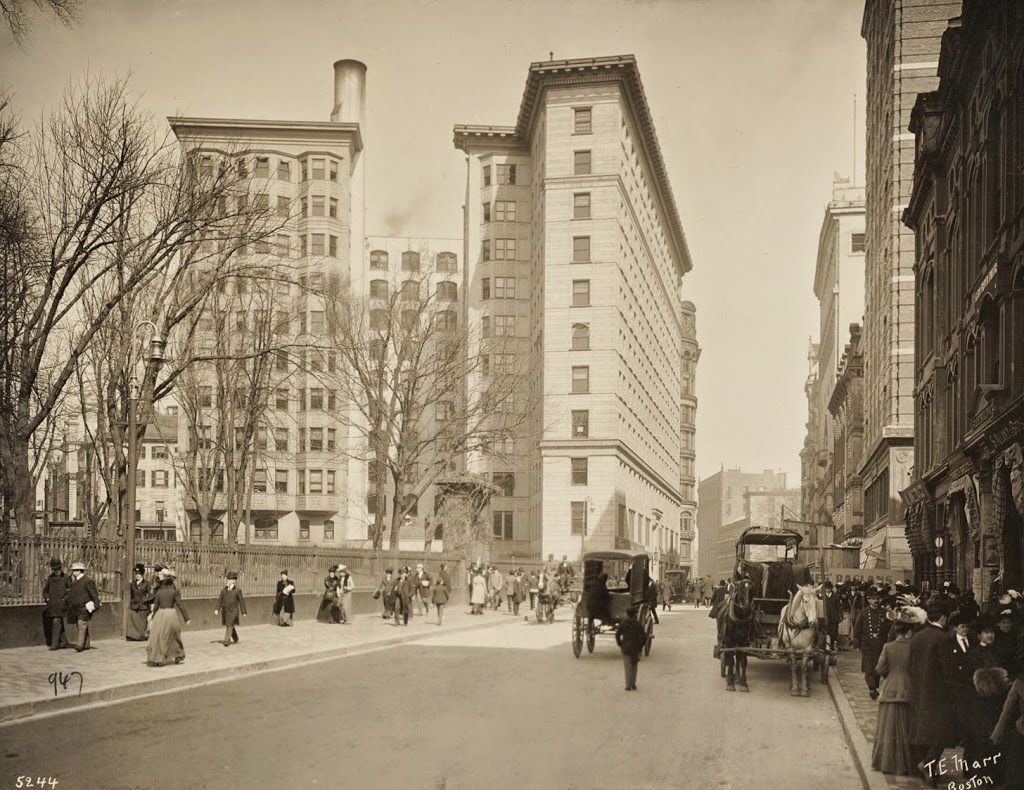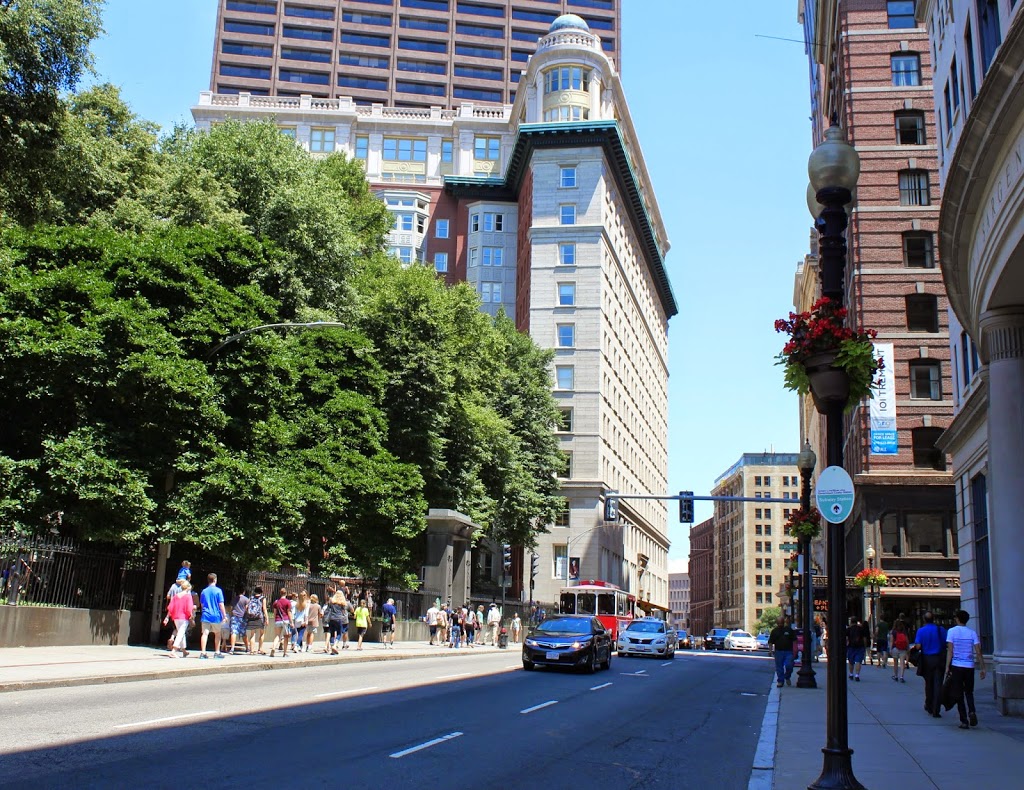Looking up Tremont Street toward Park Street along Boston Common, around 1899. Image courtesy of the Library of Congress, Detroit Publishing Company Collection.
The scene in 2014:
Similar to the scenes in this post, these photos show the view looking along Boston Common toward Park Street Church. Not much has changed on the Common, but this section of Tremont Street is very different from its appearance 115 years ago; high-rise buildings have long since replaced the old 4-5 story commercial buildings of the 19th century. A few buildings are visible in the distance, though – in particular, Park Street Church, and also the Tremont Building behind it.

